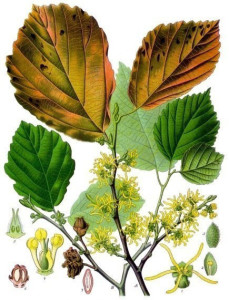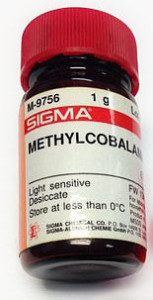Witch Hazel
 The witch hazel shrub (Hamamelis virginiana), which is native to North America, is also known as winterbloom or spotted alder. The leaves and bark are used to make an astringent extract, also called witch hazel, which was used medicinally by Native Americans long before European settlers arrived on the continent. The Native American tradition was to steam the twigs to extract the useful compounds.
The witch hazel shrub (Hamamelis virginiana), which is native to North America, is also known as winterbloom or spotted alder. The leaves and bark are used to make an astringent extract, also called witch hazel, which was used medicinally by Native Americans long before European settlers arrived on the continent. The Native American tradition was to steam the twigs to extract the useful compounds.
To this day, witch hazel extract remains a component of a several commercial healthcare products. It can also be purchased in a relatively pure form, from most pharmacies and drug stores.
Wikipedia states: ‘The essential oil of witch hazel is not sold separately as a consumer product. The plant does not produce enough essential oil to make production viable, however, there are various distillates of witch hazel (called hydrosols or hydrolats) that… contain alcohol. … Witch hazel is mainly used externally on sores, bruises, and swelling.’
Douglas Harper, in the Online Etymology Dictionary (2001) explains that the term ‘witch’, in this case, has its origins in Middle English ‘wiche’, from the Old English ‘wice’, meaning ‘pliant’ or ‘bendable’.
Our modern word ‘wicker’, (defined as pliable twigs, typically of willow, plaited or woven to make items such as furniture and baskets) evolved from the same root.
For people who suffer from histamine intolerance, the gentle, healing properties of witch hazel liquid from the druggist can be of great benefit. When dabbed on itchy skin, it can greatly ameliorate symptoms. One patient with an itchy scalp, who had tried every prescription treatment to no avail, cured her condition by rinsing her hair every day for a fortnight with witch hazel.
Liquid witch hazel hydrosol is a strong anti-oxidant and astringent. It can help soothe ‘weeping’ or oozing dermatitis, reduce inflammation in contact dermatitis, and for many people it relieves the itching of perioral dermatitis and atopic eczema. It is frequently used to treat psoriasis, shaving rash, excess sweating of the face, cracked or blistered skin, insect stings and bites, allergies to plants such as poison ivy, varicose veins and hemorrhoids, and to reduce swelling and soothe wounds.
Witch hazel is inexpensive, natural and gentle; a boon to those with histamine intolerance who often endure itching skin.

 Histamine and Heartburn
Histamine and Heartburn Antihistamines
Antihistamines